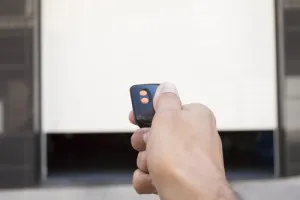Opening and closing an automatic garage door is usually an easy task. Most of us just punch in the code on our keypad, or hit a button on our garage door opener and walk right through.
On April 28th 2014, a 9 year-old boy from Oakville, Ontario used the keypad to open his family’s garage door. The hood of his sweatshirt got caught in the door’s mechanism. He was pulled up with the door and nearly choked to death. Thankfully, a passerby witnessed the incident and managed to free the boy while someone else called 911. CPR had to be performed, and the child was quickly brought to a nearby children’s hospital, where he was expected to make a full recovery. This experience is a scary one that no parent ever wants to go through.
Like any piece of equipment, care needs to be taken around automatic garage doors. Despite the built-in safety mechanisms found in modern doors, accidents can and will sometimes happen.

Here are important garage door safety tips you should consider:
1. Read the owner’s manual to learn about your door’s safety features and how to use the emergency release. If you can’t find your guide, go to this link: http://www.doors.org/AboutIDA/MediaRoom/ConsumerLiterature/ConsumerSafetyGuide.aspx
2. Keep the garage door opener out of the reach of small children.
3. Don’t let children play with garage door remotes.
4. Talk to your children about garage door safety and how to operate the door safely. One dangerous situation we unfortunately see: a child pushes the wall-control button to close the door, runs to get out, but trips and falls under the door’s path. Passing under a moving garage door can lead to serious injury.
5. Garage doors are not toys. Do not let children play around or hang on an automatic garage door. Not only can this damage the door, but children risk being seriously injured.
6. Inspect your garage door every month. You’ll want to look at the cables, springs, rollers and pulleys for any signs of wear and tear. If you see signs of damage, don’t attempt to make repairs yourself. These parts are under high tension. Trying to repair the parts yourself can lead to serious injury, or cause even further damage, which will cost you more money. Play it safe and call a professional to come and make the necessary repairs or replacements instead.
7. Check your garage door opener’s reversing mechanism every month. You can do this by placing a 2’’ X 4’’ block of wood in the garage door’s path. If the door does not reverse when it hits the block, call a professional to repair the door. If you have an older opener, consider upgrading to a newer version.
8. If you have a photocell reverse system, check if it’s working properly. As your door is closing, pass your leg in the door’s path to be sure the door reverses.
9. DO NOT place your fingers between the door sections. If you have children, or if any children are visiting, explain the dangers to them. You may want to consider door panels that don’t pinch.
10. Use the release mechanism on the garage door opener, and manually open the door using the interior or exterior handle. The door should lift smoothly, with little resistance, and should stay open about 4 feet from the ground. If the door is difficult to open, it may be out of balance, which can damage the opener. If you find yourself in this situation, call a repairman to fix the problem.
11. Never leave the garage door partially open. When activated again, the door could hit whatever may be in its path. You’ll also want to consider fully closing the garage door for security reasons.
12. If you are leaving on vacation, unplug the garage door opener. Or you can use a lock console security switch, which makes the remote unusable.
13. Code grabbing can be a security risk and a safety hazard. If your garage door opener has rolling-code technology, it will change the access code each time the opener is used. If not, make sure you change the access codes regularly on your opener and remote control. Or you can upgrade to an opener that comes with this technology.
14. Never leave your garage remote control in the car unattended. Try using a key chain remote, or keep the remote in your purse or pocket. This prevents thieves from stealing the remote and gaining access to your home.
If you don’t have time to check the safety of your garage door and electric opener, contact a garage door specialist. Regular maintenance and testing are important for your family’s safety!


Add new comment